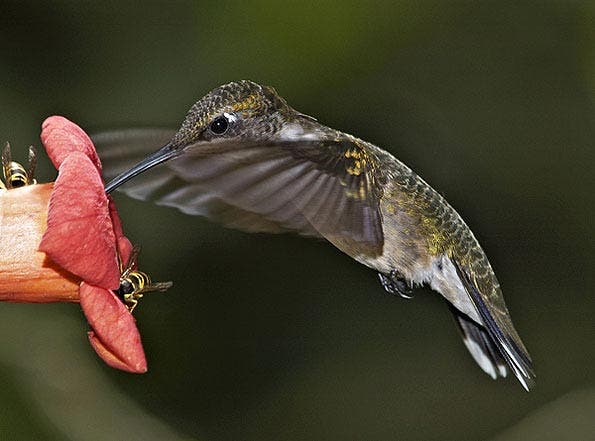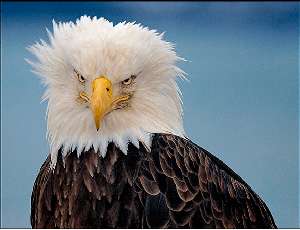To celebrate National Bird Day (January 5), we asked world-renowned travel and wildlife photographer John Isaac to share some of his best bird photos!
About John Isaac
Chief photographer at the United Nations for many years, John Isaac came to the U.S. from South India forty years ago. But he still has a special place in his heart for the tigers of his native land, particularly as their numbers dwindle catastrophically. Between visits to photograph India’s big cats (the subject of an upcoming monograph) at India’s National Parks, Isaac also spends a lot of time photographing birds—perhaps his other favorite creature.
Related Content:
- Bird Is The Word…And The Image
- Backyard Bird Photography Gear Guide
- Wildlife Service: Beyond Long Lenses
- Scott Bourne Interview—AdoramaTV
- Wildlife Photographer Will Burrard-Lucas—AdoramaTV
- Adorama Photographs America: Birding in South Florida
- More bird/wildlife content…
It’s not as if Isaac has had a long career in wildlife photography. Until he left the United Nations in the late 1990s, he was essentially a photojournalist. Decades of documenting human degradation, culminating in the Rwandan genocide, finally burned him out—and for the past dozen years the wild creatures of the world have helped him rise from those ashes like that famous bird, the Phoenix.

A puffin clutches its catch at Puffin World Headquarters, Machias Seal Island in Maine. Isaac waited and shot for nearly three hours as the bird went fishing and returned to the same spot.
Indeed, as a wildlife photographer Isaac has the patience of a bird searching for food, waiting for hours if not days to capture his subjects just the way he thinks they should be seen. Other photographers often come and go as Isaac stakes out a wildlife subject, too hurried to wait for just the right moment. And as you’ll see from the photographs in this portfolio of Isaac’s bird imagery, the right moment is often what makes his pictures great.
The other part of the equation, though, is technique. Some photographers refuse to believe that Isaac gets his extraordinary images with an Olympus DSLR rather than a Canon or a Nikon—yet they themselves would tell you that it’s photographers who make photographs, not cameras. The good ones understand both the possibilities and the limitations of photography’s tools, from the ungainliness of super-telephoto lenses to the complexities of Photoshop.
On that count, Isaac, who spent years making color prints in the U.N. darkroom, has taken his printing skills into the digital age—creating extraordinarily rich, detailed images despite the lower-than-typical resolution of his ten-megapixel Olympus E-3 and, now, the 12-megapixel Olympus E-5. And before that he was shooting with the five-megapixel Olympus E-1, a camera that got a bum rap from DSLR photographers, making 15×20 prints that held up beautifully because of his careful craft.
Unfortunately, you won’t get a sense of Isaac’s exquisite prints from this portfolio. You will get a sense, though, of the photographer’s determination to show animals, birds in particular, in their best light. And, like Isaac, you will understand the saving grace of wild creatures.
Set 1: Red-Crowned Cranes

Red-crowned Cranes do mating dances on Hokkaido, Japan’s northernmost main island. “I stood in the snow for almost four days, eight hours a day in the same spot, to catch the activity,” says Isaac. “It’s not just a matter of patience, but you have to be alert since they do the dances for just a few seconds at a time.” Isaac was using his Olympus E-5 with a monopod and long lenses; heavy snow made focusing difficult.





Set 2: Sandhill Cranes

Sandhill Cranes work and play in New Mexico’s Bosque del Apache National Wildlife Refuge. Isaac shot the flying birds when the moon was still out but the sun was coming up, which produced a warm, angled light. He used the Olympus 90-250mm f/2.8 Zuiko Digital zoom on his Olympus E-5. “It’s nice to have a long zoom that ranges from the equivalent of 180mm to 500mm,” says Isaac.



Set 3: Eagles

American Bald Eagles work their territory near the town of Homer, at the southern tip of Alaska’s Kenai Peninsula.





Set 4: A whole menagerie—including the birds in your own back yard!

A bluebird sits patiently for its portrait in a Nashville, Tennessee back yard.

A tiny Ruby-throated Hummingbird sucks nectar next to pollinating bees, hovering in plain sight in a Nashville, Tennessee back yard. Isaac used fill flash at 1/180th second to create an effective combination of sharpness and blur in the bird’s fast-flapping wings.

While Isaac was waiting for his beloved tigers to make an appearance in India’s Ranthambore National Park, he caught this egret filching frogs from the big cats’ watering hole.


A kingfisher earns its name at Dal Lake in the Kashmir region of India. Isaac spent many months photographing the area, determined to show the daily life of people and animals and the beauty of the landscape, rather than the conflict that threatens the state. This body of work is collected in a monograph called The Vale of Kashmir (W. W. Norton).

A barn swallow dries off its wings.

A common grebe seems to be shielding its chick, which insists on peeking around mom to see the photographer.


A Red-crested Crane feeds seeds to its enormous chick in Kenya’s Masai Mara National Reserve.

A stork inspects mating frogs at Ranthambore National Park in India. “The stork could eat the single frogs, but the mating ones were too big for it,” Isaac recalls. “Afterwards I saw the two frogs here hop out of the pond into the bushes.”

A female Osprey soars over Long Island, New York. The sharp-eyed, sharp-billed birds of prey can be found all around John Isaac’s New York City-area home.



